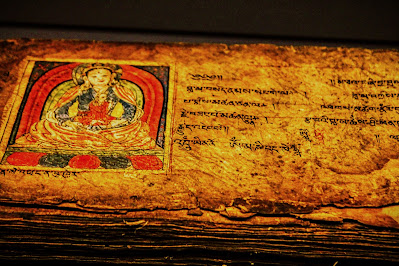Kali Yuga - The Epoch of Darkness
In the tapestry of Hindu cosmology, the concept of time weaves a profound narrative, encompassing epochs of light and darkness, creation and dissolution. Central to this cosmic drama is the notion of yugas, cyclic ages that shape the destiny of humanity and the cosmos. At the heart of this cosmic drama lies Kali Yuga, the age of darkness, embodying the depths of human depravity and spiritual decay.
 |
| Epoch of Darkness |
Understanding the Yugas - A Journey Through Time
The concept of yugas finds its roots in ancient Hindu scriptures, particularly in texts like the Mahabharata and the Puranas. These sacred texts delineate four distinct epochs, each with its own defining characteristics:
1. Satya Yuga (or Krita Yuga) - The Satya Yuga, also known as the Golden Age, symbolizes the pinnacle of virtue and righteousness. It is an era marked by spiritual enlightenment, where humanity lives in harmony with the divine and the natural world. Truth reigns supreme, and the pursuit of knowledge and wisdom is paramount.
2. Treta Yuga - As time progresses, the Treta Yuga witnesses a gradual decline in virtue and righteousness. While humanity still retains some semblance of moral integrity, spiritual understanding begins to wane. Materialism and ego start to encroach upon the purity of the human soul.
3. Dvapara Yuga - In the Dvapara Yuga, the decline accelerates further. Truth and righteousness diminish significantly, giving way to greed, corruption, and moral ambiguity. Despite the prevailing darkness, pockets of virtue and righteousness persist, albeit in diminishing measure.
4. Kali Yuga - The Kali Yuga, the age we currently inhabit, is characterized by spiritual darkness and moral decay. Truth becomes a scarce commodity, and humanity is engulfed in ignorance, materialism, and strife. It is an era of rampant vice, where greed, lust, and violence hold sway over the hearts of men.
Kali - The Dark Goddess of Time
In Hindu mythology, Kali is the fierce and formidable goddess who personifies the destructive aspect of time. She is depicted as a dark-skinned goddess adorned with skulls and wielding weapons, symbolizing the inexorable march of time that annihilates all things. Yet, amidst her terrifying visage lies the promise of transformation and liberation, for Kali is also the compassionate mother who grants liberation to her devotees by destroying their ego and attachments.
The Epoch of Darkness - Where Are We Now?
According to ancient Hindu scriptures and yogic texts, we are currently amid the Kali Yuga. While the exact duration of each yuga is subject to interpretation, it is believed that the Kali Yuga spans a total of 432,000 years. As we navigate through this age of darkness, grappling with the myriad challenges of modern existence, seeking solace and guidance in the timeless wisdom of the ancient sages becomes imperative.
Navigating the Cosmic Cycles
In the grand tapestry of Hindu cosmology, the yugas serve as a reminder of the cyclical nature of time and the eternal dance of creation and dissolution. While Kali Yuga may seem like an age of despair and desolation, it also presents an opportunity for spiritual growth and self-realization. By embracing the teachings of the sages and cultivating virtues such as compassion, wisdom, and selflessness, we can transcend the limitations of this dark epoch and awaken to the eternal light of consciousness that resides within us all.
As we journey through the epochs of time, let us heed the wisdom of the ages and strive to embody the highest ideals of humanity, transcending the darkness of Kali Yuga and ushering in a new dawn of enlightenment and unity. For in the timeless words of the ancient sages, "Satyameva jayate" – Truth alone triumphs.
Tanmay Bhati










Comments
Post a Comment
If you have any questions, do write to us or mention them in the comment box. In our next article, we will definitely try to address them.